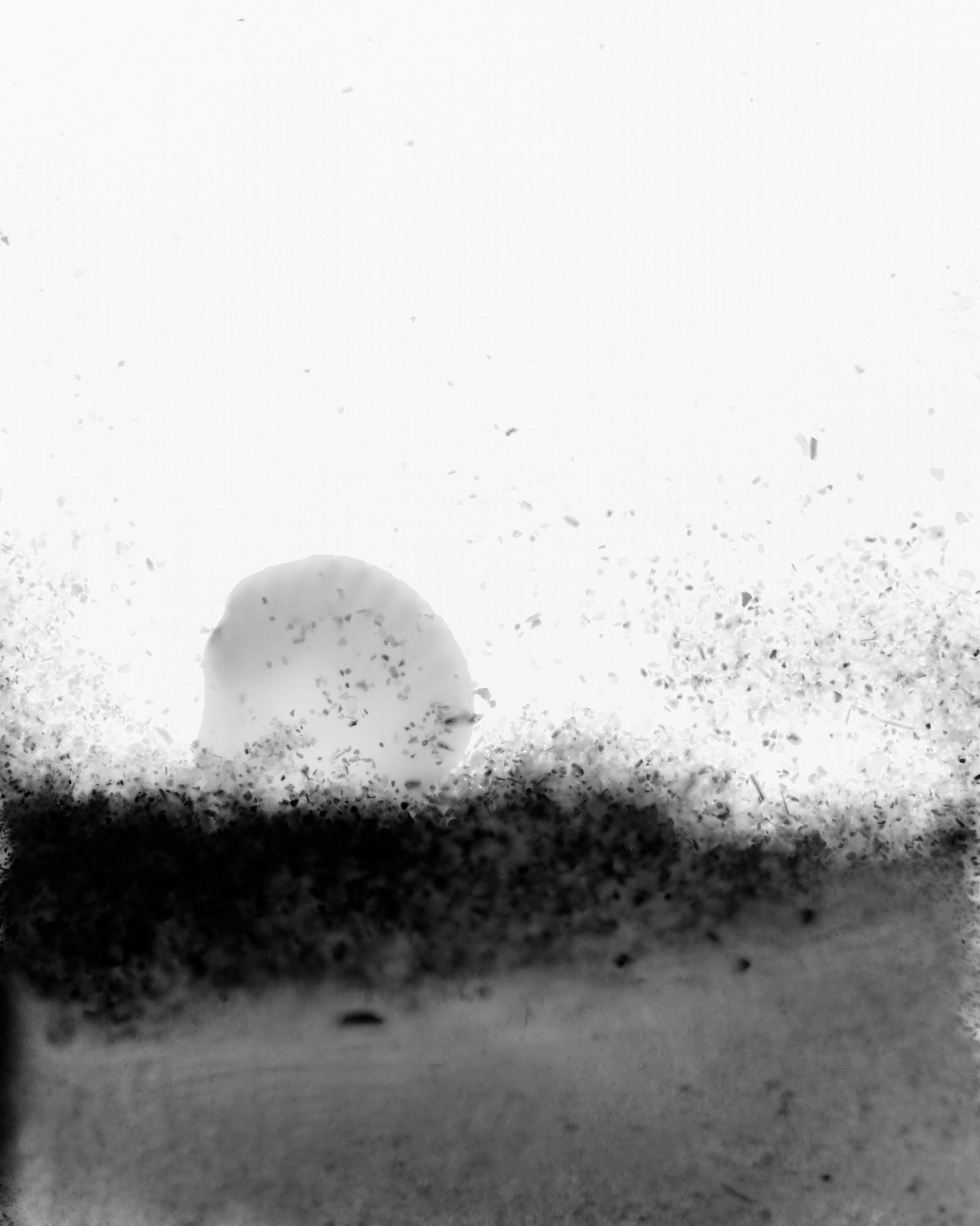Swell - Holly Schulte
The cameraless photographs in Swell express the fascinating and ethereal beauty of tidal passage from beneath ocean waves to the shoreline. The delicate translucency and unusual structures have been enlarged to reveal a myriad of forms and textures. Intricate seaweed fragments, sand and shells, with creatures that might occupy rockpools or seaweed forests provide an experience of our near-shore oceans. These natural specimens used were collected from beaches in the northern and eastern suburbs of Sydney.
Compositions emerge from the blackest depths or float in the light of a watery surface but are held in motion. Captured in the darkroom by floating seaweeds in water and exposed in direct contact with the surface of photographic film. The photographs provide an immersive, emotional and aesthetic response to the seaside and ocean life inspired by a childhood nostalgia for beachcombing, fascination with historic photographic processes and early botanical practices.
Seaweeds are an important part of ocean biodiversity and collecting specimens has long been practised in biological and artist pursuits. In the Victorian era there was a great enthusiasm for seaweed collecting, preserving, arranging and study among amateur women botanists. Anna Atkins is celebrated as a pioneering female English photographer and amateur botanist. In the mid 1800s, she made studies using the cyanotype process to directly image seaweed to photo-sensitive paper, creating a negative image. These were privately distributed as the series ‘Photographs of British Algae’ and remain a significant contribution. Since those times, naturalists have been aware of the human impact on the environment. In recent decades there has been a decline of precious marine habitats and seaweed populations along the east coast of Australia.
Join us for opening night of D/O.70 Swell
Thursday March 23rd from 5pm - 7pm
Holly’s work will be on display from
March 23rd through April 8th at Disorder Gallery
Production for this exhibition was generously supported by
Ilford and Vision Image Lab





